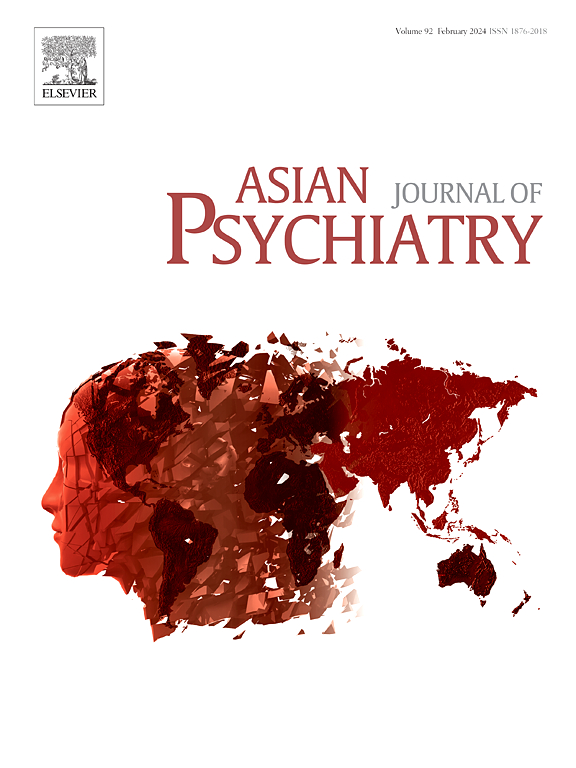Coronavirus disease 2019 pandemic and suicide rates in South Korea: A time-series analysis of its onset and end
IF 4.5
4区 医学
Q1 PSYCHIATRY
引用次数: 0
Abstract
This study examined the impact of the coronavirus disease 2019 pandemic on suicide rates in South Korea by age and sex using an interrupted time series (ITS) analysis. We analyzed the monthly suicide mortality data from 2012 to 2023, covering 144 months across 16 sex- and age-specific groups. The study period was divided into three stages: pre-pandemic, pandemic, and post-pandemic. Regression models were constructed to assess changes in suicide rates at the onset and end of the pandemic while controlling for seasonality using sine and cosine terms. The results showed that overall suicide rates decreased during the pandemic compared with the pre- and post-pandemic periods. In men, there was no significant difference in the suicide rate or its slope before and after the pandemic. However, in women, the suicide rate increased at the beginning of the pandemic. Certain subgroups—including men in their 20 s and 70 s and women across several age groups—showed significant increases at the onset of the pandemic or rising trends during and after. Suicide rates steadily declined before the pandemic, while younger female groups showed rising trends even before their onset. Seasonal analysis revealed that suicide rates were lower in winter and higher during the rest of the year, with distinct seasonal patterns across age groups. This study highlights the differential impact of the pandemic on suicide trends across demographic groups.
2019冠状病毒病大流行与韩国自杀率:发病和结束的时间序列分析
本研究使用中断时间序列(ITS)分析,研究了2019年冠状病毒病大流行对韩国年龄和性别自杀率的影响。我们分析了从2012年到2023年的每月自杀死亡率数据,涵盖了16个性别和年龄特定群体的144个月。研究期间分为三个阶段:大流行前、大流行和大流行后。建立了回归模型,以评估大流行开始和结束时自杀率的变化,同时使用正弦和余弦项控制季节性。结果显示,与大流行前和大流行后相比,大流行期间的总体自杀率有所下降。在男性中,大流行前后的自杀率及其斜率没有显著差异。然而,在妇女中,自杀率在大流行开始时有所上升。某些亚组——包括20岁 和70岁 的男性以及几个年龄组的女性——在大流行开始时出现显著增长,或在疫情期间和之后出现上升趋势。自杀率在大流行之前稳步下降,而年轻女性群体甚至在发病之前就显示出上升趋势。季节性分析显示,自杀率在冬季较低,而在一年中的其他时间较高,不同年龄组的季节性模式不同。这项研究强调了这一流行病对不同人口群体自杀趋势的不同影响。
本文章由计算机程序翻译,如有差异,请以英文原文为准。
求助全文
约1分钟内获得全文
求助全文
来源期刊

Asian journal of psychiatry
Medicine-Psychiatry and Mental Health
CiteScore
12.70
自引率
5.30%
发文量
297
审稿时长
35 days
期刊介绍:
The Asian Journal of Psychiatry serves as a comprehensive resource for psychiatrists, mental health clinicians, neurologists, physicians, mental health students, and policymakers. Its goal is to facilitate the exchange of research findings and clinical practices between Asia and the global community. The journal focuses on psychiatric research relevant to Asia, covering preclinical, clinical, service system, and policy development topics. It also highlights the socio-cultural diversity of the region in relation to mental health.
 求助内容:
求助内容: 应助结果提醒方式:
应助结果提醒方式:


